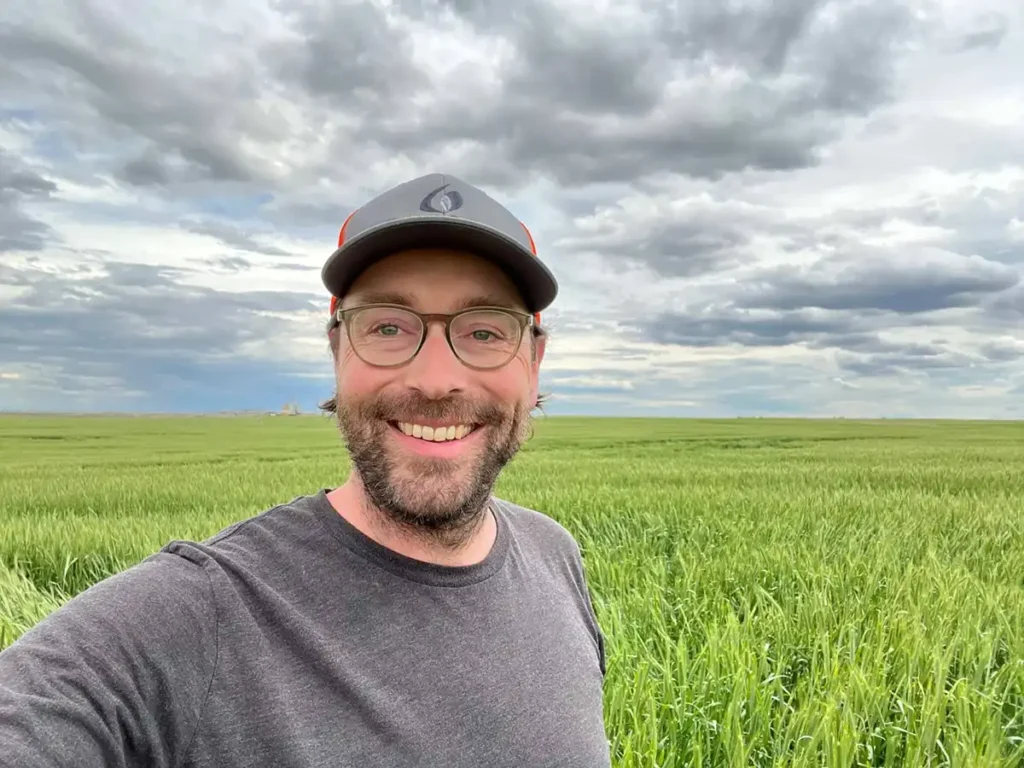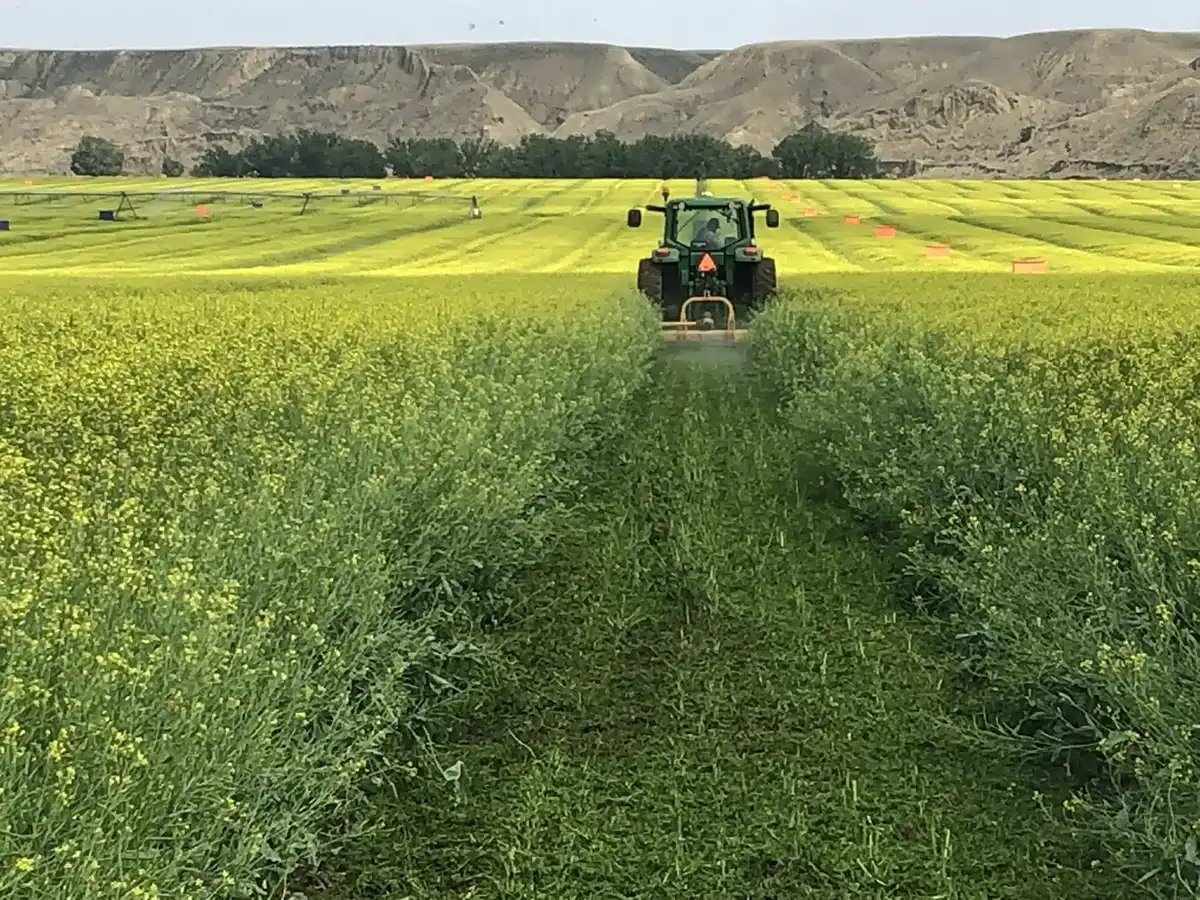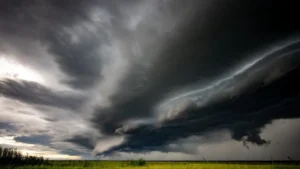As Alberta braces for a potential drought, seed growers are optimistic that farmers won’t be too adversely affected should dry weather plague the province in 2024.
“It doesn’t usually take much to break a drought — a couple of good rains can do wonders. If we do get above-average moisture, things should be fine. But if not, and we end up with average or below-average moisture during the growing season, we’ll have to adjust our irrigation strategies,” says Will Van Roessel, owner of Specialty Seeds in Bow Island, Alta.
Specialty Seeds, which grows a variety of crops for seed including hybrid canola, wheat, hemp, pea, and more, is situated in the St. Mary’s River Irrigation District, which happens to be the largest irrigation district in Canada. It’s quite substantial, covering a little over half a million acres.
“Most people will likely shift water allocation from lower-value crops to higher-value ones. It’s a bit of a juggling act, and crop insurance coverage plays into it, too. I recently had a customer who switched from spring wheat to durum because his insurance coverage for durum was better, and he expected lower production due to reallocating water to potatoes.”
According to Van Roessel, dealing with potential drought is about having a plan and being prepared for different scenarios.
“Nobody’s panicking, but everyone’s ready to adapt if needed. We’ll be keeping a close eye on things and adjusting our plans accordingly as the situation evolves.”

Agreement in Place
The largest water-sharing agreements in Alberta’s 118-year history are now in place to help respond to the risk of severe drought, the province says.
After several dry years and El Niño producing a warm, dry winter across Canada, Alberta is at risk of severe droughts this year, especially in southern Alberta. Recent snowfall has helped, but the province’s winter snowpack remains below average, many rivers are lower than normal and multiple reservoirs are below capacity.
To help, 38 of the largest and oldest water licensees in southern Alberta have voluntarily agreed to reduce the water they use if severe drought conditions develop this spring or summer. These groups represent up to 90 per cent of the water allocated in the Bow and Oldman basins and 70 per cent in the Red Deer River basin.
“With these agreements, Albertans are once again coming together when times get toughest. They will help make the most of our limited water supplies and make every drop count if a severe drought hits this summer,” said Environment Minister Rebecca Schulz.
According to Greg Stamp, seed sales manager for Stamp Seeds in Enchant, a recent snowstorm is probably the best kick-off he could hope for, especially for the drylands region in the south.
“We recently got hit by a hefty snowstorm that swept through southern Alberta. It was a bit of a relief because things were looking bleak with the dry conditions we’d been experiencing. The snow came about two weeks back and melted nicely, giving us a solid moisture boost,” he says.
But here’s the twist: while he’s feeling a bit more hydrated down at ground level, the mountains are still lagging in snowpack.
“That means our irrigation systems are taking a hit, with some districts having to make significant cutbacks. It’s a juggling act for farmers, with water being diverted to priority crops like potatoes or canola, while others might see changes in what they plant, opting for more water-efficient options like lentil or pea.”
Stamp’s irrigation district (Bow River) seems to be holding up alright for now, and the dryland in his region isn’t too parched, either.
“Of course, it’s not smooth sailing for everyone. A lot of our customers are facing issues, especially those dealing with high-water-use crops like potatoes. It’s a real puzzle trying to figure out what to plant when water is in short supply,” Stamp adds.
“More and more people seem to be turning to lentil and pea, which are a bit easier on irrigation. It’s a whole dance of shuffling water from one field to the next, and sometimes you just have to bite the bullet and short one field to keep the rest going. It’s all about making the best of a tricky situation.”
There are four water-sharing agreements in place in Alberta, one to cover each of the following sub-basins: the Red Deer River, the Bow River, the mainstem of the Oldman River and the upper tributaries of the Oldman River. Specific commitments are laid out in each individual Memorandum of Understanding, but generally speaking:
- Participating municipalities will reduce water consumption by between five and 10 per cent.
- Participating industries will use only the minimum volume of water practical to maintain safe, reliable operations. They will also look for additional water conservation opportunities.
- Participating irrigation districts will use less water and allow other users to get their water first, then use the remaining water available for licensed use.
Good News in Bow River Region

Seed grower Glenn Logan, who operates Wheatcrest Farms in Lomond, sat on the board of the Bow River Irrigation District for over 20 years. He’s thrilled about the ample spring moisture received in his area, but he’s concerned about the Lethbridge area to the south.
That region relies on the Oldman River system for their water, but the reservoir levels have been low. In the St. Mary’s Irrigation District, it’s a similar story.
“It’s tough for them, no doubt about it. But they’re somewhat accustomed to these water restrictions, having dealt with them before. However, it’s a whole different ball game for us in the Bow River District. This is the first time we’ve ever faced such limitations. It’s a stark reminder of just how precarious our water situation can be, and it’s got us all a bit on edge.”
Some good news came in for his region this week — irrigation allowable water usage has since been updated to 16 inches. Snow this week in the Bow basin received 35 cm, with more to come.
“If the melt in the mountains is slow we would be able capture a lot of that water. Snow fall to the south will not provide as much relief for the south irrigation districts,” he adds.
Despite his positivity, according to Stamp, the irrigation situation has really thrown a wrench into things for many farmers like him, and his customers as well.
“It’s forced us to make some hard decisions about where to allocate our limited water resources. But hey, those choices are behind us now, and all we can do is cross our fingers for a slow snowpack melt and some good old-fashioned June rains up in the mountains,” he says. “If we can get more streamflow, it’ll be a huge relief for the irrigation districts and us dryland farmers alike.”
No matter what happens, Stamp doesn’t expect seed supply to take a major hit in 2025.
“We’re not hitting the panic button just yet. If we’re forecasting a shortfall in a certain crop or variety, we have ways to adapt. We can either increase the acreage for that crop or adjust as needed. It’s all about crunching the numbers, factoring in potential yields, and building in some wiggle room for unexpected challenges like hail or other weather woes,” he says.
“Usually, there’s a bit of a safety net built into our planning process, so we’re not caught completely off guard by problems. That being said, it’s a different story in areas like central Alberta, where they might be expecting bumper crops but end up with a fraction of what they anticipated. That kind of shortfall can have a significant impact, especially when it deviates so far from the norm for the region.”
Stamp adds that a widespread drought is a much bigger concern than just a few irrigation districts running a bit short.
“If certain varieties run out in one region, it’s not like you can just pick them up from another area. Take lentils, for example. They’re mainly grown in specific regions, so if those areas are hit by drought, there’s no backup plan,” he adds.
“It all boils down to the impact on the regional crop network. Some crops are more widespread and resilient, like hard red wheat, which you can find almost everywhere. But others are more niche, tied to specific growing regions. So, when those regions face challenges, it creates a ripple effect that can’t easily be mitigated by importing from elsewhere. It’s a tough reality we have to navigate in this industry.”
Logan says just as in every other area of farming, attitude plays a big role for him.
“There are always choices, always alternatives if you’re willing to see them. If you’re fixated on the negatives, that’s all you’ll see. But out here, especially in the farming community and the Bow River area, we have some flexibility,” he says.
“We’re allowed to pool water resources and redistribute them, shifting from fields of lesser value crops to those with higher returns. That’s a game-changer for potato growers. They’ll minimize irrigation on barley fields and maximize it on their potato crops. So, there are solutions if you look for them.”













